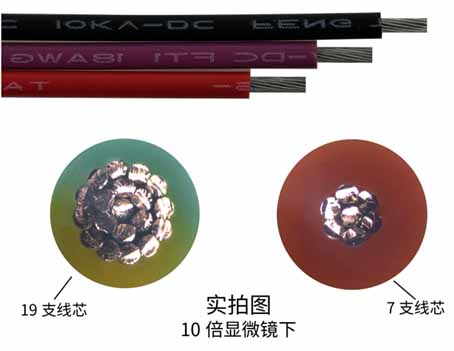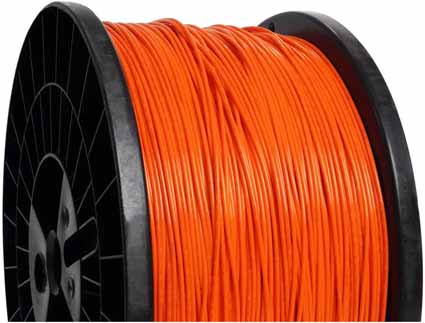PTFE, PFA high temperature silicone cable

The high temperature cable is a wire with insulation material of PTFE, PFA, FEP, and the conductor material is a multi-strand soft copper conductor. Heat-resistant and high-temperature wires and cables are generally determined by two requirements. The first is that the ambient temperature of the wire and cable is relatively high, and the cable can normally transmit signals or electric energy under high temperature for a long time; The other is the power transmission cable, which is mainly aimed at increasing the interception capacity.
Product model: THAFPF 6×19×0.15;
Executive standard: Q/IRMV1-2008 [1].
Introduction to high temperature cables
General wire and cable are insulated and sheathed with plastic and rubber. These materials are all conventional engineering materials, have abundant sources, can meet mass production, and the cost is relatively low. But for some special industries such as petrochemical, steel, aerospace, shipbuilding, military, pharmaceutical, food, plastic machinery, boilers and other industries related to heat and high temperature, wires and cables that can withstand a certain higher temperature are required. Obviously, ordinary wires and cables cannot be used, and wires and cables that can withstand high temperatures are needed to ensure the safe operation of their power and signals.
Structural parameters of high temperature cables
Conductor material: multi-strand soft copper conductor;
Insulation material: fluorine plastic insulation, temperature range -60-260℃;
Filling material: glass fiber;
Sheath material: fluoroplastic sheath, temperature range -60-260℃.

Use characteristics of high temperature cables
1. AC rated voltage: U0/U 450/750KV.
2. Maximum working temperature: PTFE (F46) insulation does not exceed 200°C. Soluble polytetrafluoroethylene (PFA) insulation does not exceed 260°C.
3. The lowest ambient temperature:
PVC sheathed cable: The ambient temperature for fixed laying is -40℃, and for non-fixed laying, it is -15℃.
Fluoroplastic and silicone rubber sheathed cables: The ambient temperature for fixed cable laying is -60℃, and for non-fixed cable laying, it is -20℃.
4. The temperature of cable installation and laying should not be lower than 0℃ (the ambient temperature of fluoroplastic, silicone rubber and composite sheathed cables should not be lower than -25 ℃).
5. Cable allowable bending radius: the minimum non-armoured cable is 6 times the outer diameter of the cable. The minimum of copper tape shielded or steel tape armored cable is 12 times the outer diameter of the cable. Fluoroplastic insulated and sheathed cables are at least 8 times the outer diameter of the cable.
Main features of heat-resistant and high-temperature wires and cables
Cables that work in high temperature environments. Ordinary cables are prone to insulation aging and scorching at high temperatures, and the use of cables loses performance, is damaged and cannot be used. The high temperature cable can work normally and stably under the rated high temperature, the signal or power transmission performance is not affected, and the cable has a long service life. This type of functional cable is the most common type of high-temperature cable, and its use characteristics are also the easiest to understand.
The high-temperature cable with increased interception capability is mainly to ensure that the outer diameter and weight of the cable are reduced under the precondition of current-carrying, and the weight is reduced. Generally speaking, the higher the working temperature of the cable, the greater the current carrying capacity of the cable of the same cross-section. In occasions such as airplanes and automobiles, weight reduction is of great significance, and the use of high-temperature cables greatly reduces the cross-section. When the operating temperature rises from 90°C to 155°C, the current-carrying capacity increases by 50%. Under the same current-carrying capacity, the weight of the cable is reduced by half, and the cost is also reduced. Of course, at the same time as the high current interception capacity, the power loss of most insulating materials will also increase.





